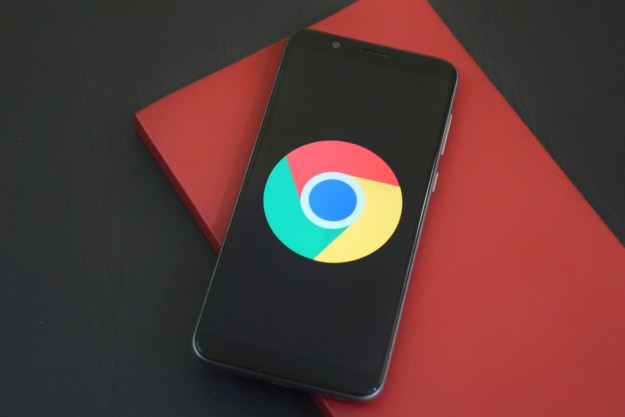With working from home more popular than ever, videoconferencing services like Google Meet and Zoom are proving to be invaluable resources for small businesses, major corporations, and everyday netizens alike. Google Meet has only been on the market since 2017, but Google released a free version of Meet in late April 2020 in response to gaining 100 million daily users due to global restrictions on working at the office.
Zoom remains the king of the heap, with over 200 million daily users and a bevy of sophisticated features. Still, the free version of Google Meet offers users a web-based videoconferencing service that doesn’t require downloading a desktop version to use and is accessible for anyone who has a Google account. Each service has its pros and cons, but both are excellent at connecting people face-to-face across the internet at no cost. Read on to learn more about how Google Meet compares to Zoom and to determine which is best for you.
Since the vast majority of daily users of both Google Meet and Zoom use the free version of both services, we compare them both side-by-side to showcase their unique features and advantages. Whether you want a quick video chat with friends and family or need to host 50 or more participants in a multi-meeting conference, both options will serve you well.
Availability and accessibility
While Zoom is the most popular free videoconferencing software, one notable advantage that Google Meet has is the ability to host a meeting via your web browser of choice. Participants can join a Zoom call using their browsers but must currently open the Zoom web client through your browser or the Windows 10/MacOS client. As far as mobile clients are concerned, both Zoom and Google Meet have free apps for Android and iOS devices, so you can video conference from anywhere as needed.

Another area where Google Meet has the upper hand is that you can access it through Google Chrome and other browsers directly without the need for plugins or additional downloads by visiting meet.google.com. It’s worth noting that Zoom does offer plugins for both Firefox and Chrome for scheduling meetings, but currently lacks the ability to schedule meetings natively without opening some client or app. Anyone with a Google login can schedule and join conferences without needing to create a separate account.
Number of participants and time limits
Both Zoom and Google Meet currently offer free meetings of up to 100 participants, but using the free version of either service comes with sharp limitations on time limits. As of September 30, Google Meets free version limits users to 60 minutes, while Zoom has consistently offered 40-minute sessions. However, Google Meet has dropped its time limits on free meetings until March 2021.
Features and functions
Both Zoom and Google Meet offer users free videoconferencing services along with a host of functions to control meetings of varying sizes. Still, Zoom clearly comes out on top in terms of the abilities and control offered to free account users. Google Meet offers features including an audio/video preview screen to prepare for meetings, controls for meeting hosts, screen-sharing, excellent cross-platform compatibility, and seamless integration with apps from Microsoft Office and Google. However, Zoom offers every single feature mentioned above and, in many cases, provides a significant upgrade from Google Meet’s current capabilities, though Google is swiftly gaining ground.
For starters, while both services offer chat functions to accompany your videoconference, only Zoom allowed you to raise your hand or make use of Emoji Responses, at least until Google Meet’s December 15 update. Google Meet’s preview screen only lets you check your own audio/video connections, whereas Zoom’s Meeting Rooms allow hosts to pre-screen participants, grant them entry to the meeting or boot them as needed. Zoom offers a suite of virtual backgrounds and lets you record meetings on your physical computer for free — Google Meet only recently started offering background blurring and allowing uploaded image backgrounds, and recording meetings requires a paid G Suite subscription.
Zoom meetings can view up to 49 participants, and as of September 15, 2020, so can Google Meet users (but only on the web version). To use a whiteboard or conduct participant polls in Google Meet, you’ll have to open a separate application like Chrome Canvas or Jamboard to collaborate. In contrast, Zoom has an integrated whiteboard and polling capabilities.
Premium versions — compare and contrast
Google Meet’s Workplace Essentials plan costs $8 per month per user and comes with a variety of upgrades. These upgrades include meetings up to 300 hours in length, a max of 150 participants, 24/7 customer support, the ability to record meetings to Google Drive, U.S. and international dial-in phone numbers, while the Enterprise version offers all that up to 250 participants plus live domain streaming for up to 100,000, and intelligent noise cancellation.

Zoom Pro costs $15 per month per user and improves upon the basic account by eliminating the 40-minute time limit on meetings, lets you record meetings on Zoom’s cloud service with 1GB of storage, live-stream Zoom meetings directly to social media, increased user management and admin options, and access to Zoom’s Reports section for detailed data on meeting lengths, participants and times. Additionally, Pro account holders gain access to Zoom Video Webinars, Zoom Room, access to Zoom’s API, and licenses and audio plans for large meetings.
One area where Google Meet is the clear winner would be security — over the past year, instances of people “Zoombombing,” or disrupting Zoom meetings with offensive content, have made the news several times. While Zoom has made considerable efforts to prevent this from occurring in the future, Google Meet has yet to report any such breaches due to their superior level of encryption. However, while the paid version of Google Meet only grants access to relatively basic improvements, Zoom provides more value by giving users developer access and access to other Zoom functions for $15 per month, whereas Google Meet plus G Suite is $20 per month for both programs.
Which is best for you?
Whether you prefer Zoom or Google Meet will largely come down to whether you need specific features like easy integration with other software or needing to record a meeting for free. While Google Meet is great for those looking to integrate their video chats with G Suite’s capabilities and more intimate video chats, Zoom’s sole dedication to video conferencing provides a more robust experience for larger conferences and corporate clients. In our current estimation, we give Zoom a narrow lead for features and its interface, but Google Meet proves that imitation is the sincerest form of flattery and remains hot on Zoom’s heels.
Editors' Recommendations
- The most common Zoom problems and how to fix them
- Google’s Incognito Mode is in trouble
- The 23 best Google Chrome themes in 2024
- The most common Google Meet problems and how to fix them
- Google Gemini vs. GPT-4: Which is the best AI?





